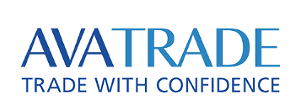Don’t invest unless you’re prepared to lose all the money you invest. This is a high-risk investment and you are unlikely to be protected if something goes wrong. Take 2 minutes to learn more
Initially, it was believed that stablecoins and tokenized real-world assets (RWAs) would be the catalysts for widespread cryptocurrency adoption among the general public. Discussions on platforms like bitcointalk.org a decade ago focused heavily on remittances. With the rise of smart contract platforms, the vision shifted towards replacing traditional financial infrastructures, such as the DTCC, with blockchain-based solutions.
The Reality of Adoption: A Two-Stage Process
Contrary to initial expectations, the first wave of stablecoin and RWA adoption did not come from everyday users or those unfamiliar with cryptocurrency. Instead, these technologies gained traction among existing crypto users before attracting a broader audience.
Crypto-Native Stage:
Stablecoins: Found their initial user base among crypto enthusiasts who used them for arbitrage across exchanges and as a haven from volatile crypto assets.
RWAs: Treasury bills were adopted by crypto users seeking returns after interest rate hikes by the Federal Reserve. DAOs and crypto startups diversified their holdings with these assets.
Crypto-Agnostic Stage:
Stablecoins: Once the infrastructure was established, stablecoins began to be used for payments, remittances, and as a hedge against inflation in countries with unstable currencies, such as Turkey and Argentina.
RWAs: Following stablecoins, other RWAs like stocks, real estate, and luxury goods are likely to follow the same adoption path, starting with crypto-savvy users and eventually reaching a wider audience.
Stablecoins: Leading the Way in Use Cases and Growth
Stablecoins have quickly moved into more mainstream, crypto-agnostic use cases:
Currency Hedging and Payments: With $10 trillion settled onchain annually, stablecoins are on par with Visa and far exceed PayPal. This level of usage highlights the value of their borderless and permissionless nature.
Global Reach: In regions like Latin America and Africa, stablecoins are used for everyday transactions, such as personal savings and business payments. Examples include people in Colombia exchanging local currency for stablecoins in malls and Africans using stablecoins for cross-border transfers and to protect savings from devaluation.
RWAs: The Next Frontier of Adoption
Crypto users are increasingly turning to RWAs for diversification:
Treasuries: As interest rates rose, entities like MakerDAO and Blackrock invested heavily in tokenized US treasuries.
Future Prospects: As the infrastructure for RWAs matures, there is expected to be a significant demand for tokenized US equities and real estate, particularly from international investors facing capital controls or other financial barriers.
Diversification and Looking Ahead
Need for Uncorrelated Assets: The drive for diversification among crypto users is propelling the adoption of RWAs, which offer more stable and uncorrelated returns compared to traditional crypto assets.
Emerging Use Cases: As RWA infrastructure develops, new use cases will likely emerge, such as using tokenized assets as collateral for loans or building global investment portfolios without complex legal and banking hurdles.
Real-World Applications and Examples
Several startups are already showcasing the practical benefits of stablecoins and RWAs:
Accrue: Facilitates quick and affordable cross-border payments in Africa, showing rapid growth and achieving positive cash flow.
GoBankless: Processes over $1 million monthly in stablecoin transactions, demonstrating strong demand.
Lulubit: A crypto neobank in Central America, offering stablecoin onramp and offramp services, and achieving 30% monthly growth.
Villcaso: Tokenizes pools of real estate assets for increased liquidity, allowing seamless DeFi interactions.
ZwapX: Tokenizes luxury watches, providing safer and faster transactions, with over $1 million in total value locked.
Dinari: Offers tokenized US stocks backed 1:1 with actual shares, meeting strong international demand.
Fig: Utilizes hedge fund strategies to create tokenized investment products, making complex financial instruments more accessible.
Conclusion
While the expectation was that stablecoins and RWAs would bring mainstream users to cryptocurrency directly, the actual adoption path has been through crypto-native users first. Stablecoins have found significant use in hedging and payments, particularly in emerging markets, while other RWAs are beginning to provide diversification opportunities for crypto users.
As the infrastructure for these assets improves, broader use cases are likely to emerge, further integrating cryptocurrency into the global financial system.
You can purchase Lucky Block – Guide, Tips & Insights | Learn 2 Trade here. Buy LBLOCK
Note: Learn2.trade is not a financial advisor. Do your research before investing your funds in any financial asset or presented product or event. We are not responsible for your investing results.
- Broker
- Min Deposit
- Score
- Visit Broker
- Award-winning Cryptocurrency trading platform
- $100 minimum deposit,
- FCA & Cysec regulated
- 20% welcome bonus of upto $10,000
- Minimum deposit $100
- Verify your account before the bonus is credited
- Fund Moneta Markets account with a minimum of $250
- Opt in using the form to claim your 50% deposit bonus
Learn to Trade
Never Miss A Trade Again

Signal Notification
Real-time signal notifications whenever a signal is opened, closes or Updated

Get Alerts
Immediate alerts to your email and mobile phone.

Entry Price Levels
Entry price level for every signal Just choose one of our Top Brokers in the list above to get all this free.





